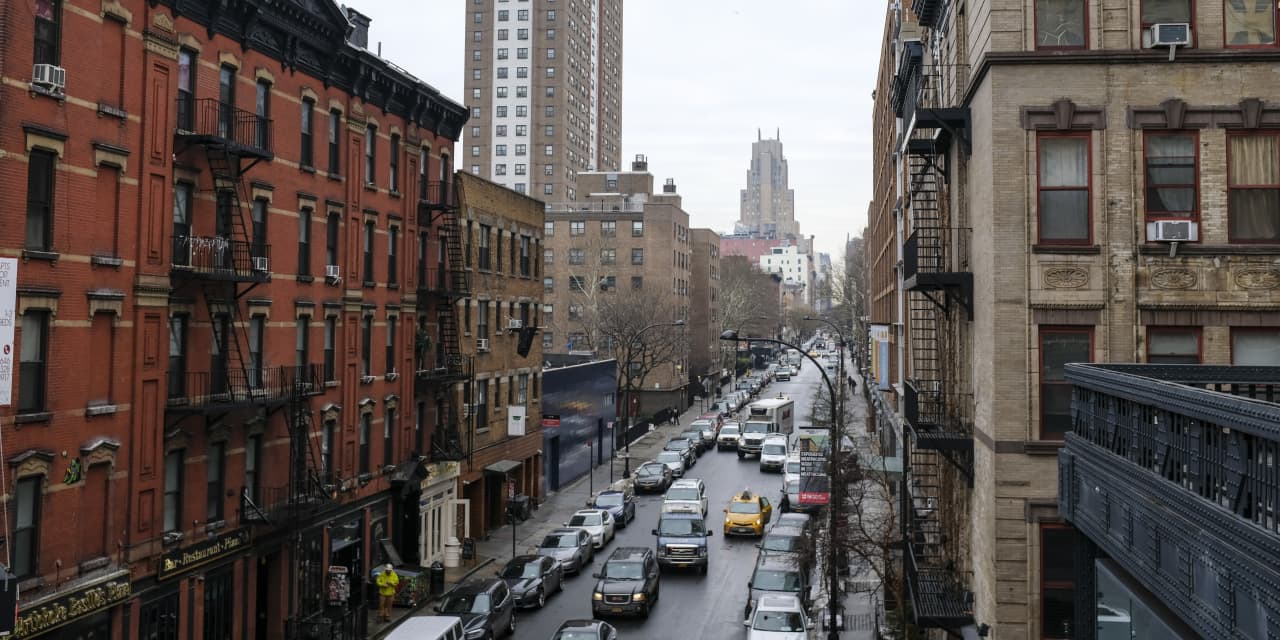Inflation in housing services picked up the pace in September after several months of slower growth.
The bad news is even higher mortgage rates could be on the way—a disappointing development for home buyers, builders, and investors. The good news is that the lagging data might not show the entire picture.
The Consumer Price Index, a government measure of inflation, rose a seasonally adjusted 0.4% in September, according to data released Thursday. The index for shelter, a category that includes measures of rent and rent-equivalents, accounted for more than half of the overall gain, the Bureau of Labor Statistics said.
Prices in September broadly gained at a slower pace than in August, according to the gauge—but the same can’t be said for shelter costs. Prices in this category increased a seasonally-adjusted 0.6% from the month prior, its greatest monthly increase since May. The shelter index was 7.2% higher than one year prior.
Rent of primary residence, a subcategory tracking the cost of rent, gained a seasonally adjusted 0.5%, the same as August’s gain, and was 7.4% higher than one year prior.
Owners’ equivalent rent, a similar measure gauging what a homeowner would have to pay to rent their home, increased 0.6%, an acceleration compared with August’s 0.4% increase, and was 7.1% higher than September 2022. Some other shelter subcategories with smaller weightings, such as lodging away from home and tenants’ and household insurance, also saw significant gains.
If September’s reading is the end of the long-awaited deceleration in housing inflation, it would be disappointing. After all, inflation watchers, economists, and the Federal Open Market Committee itself have said they expect housing services inflation to cool as the impact of higher rates on the housing market works its way into the lagging measure.
Shelter inflation gains slowed earlier this year, but recent strength in housing prices amid a low supply of homes for sale could put upward pressure on comparable rents, Barron’s previously reported. It’s a risk the Fed is aware of: “Some participants noted that housing demand was resilient despite higher interest rates,” according to the minutes from September’s FOMC meeting, released Wednesday. “The effects of a strong housing market on shelter inflation” was listed among the upside risks to inflation.
That said, one month does not make a trend—and, as economist and chief investment officer of Bleakley Financial Group Peter Boockvar wrote in a Thursday morning email, September’s increase in shelter inflation was higher than actual rent gains. “In reality, the blended rental rate increases are running 3-4% with new leases maybe 1-2% and rental rollovers at around 4-5%,” Boockvar wrote.
The shelter gauge is somewhat disconnected from the more immediate developments in the housing market. The government data can lag private rent indicators by 12 months, Barron’s previously reported.
Zillow’s
measure of asking rents, for example, increased 0.2% in September, and were 3.2% higher than one year prior, according to the company.
Rents’ stubborn ascent “is the main reason why consumer prices are not fully under control and why the Fed refuses to consider cutting interest rates,” Lawerence Yun, the National Association of Realtors’ chief economist, said in a statement.
He added that there’s reason to expect cooling in rent prices. “It is nonetheless inevitable for rent growth to slow because of the construction of multiple new apartments. Inflation and interest rates will be lower next year.”
The housing-related portion of the inflation report comes with some immediate bad news for prospective buyers: the reading could lead to higher mortgage rates today. The 10-year Treasury yield, with which mortgage rates often move, increased to 4.707% on Thursday afternoon. Mortgage rates have been climbing in recent weeks as market participants have expected the Federal Reserve to hold rates higher for longer. The average 30-year fixed mortgage rate last week was 7.49%, according to Freddie Mac, its highest level since 2000.
Investors in home builders also have reason to be disappointed: the stocks sold off Thursday as Treasury yields rose following the CPI report and a disappointing bond auction. Two exchange-traded funds tracking the home builders and related stocks, the
SPDR S&P Homebuilders
ETF (XHB) and the
iShares U.S. Home Construction
ETF (ITB), were roughly 4% and 4.8% lower Thursday afternoon, respectively.
Higher mortgage rates have sunk housing market sentiment and are expected to drive home sales lower. Economists expect that existing-homes in September were sold at a seasonally adjusted annual rate of 3.88 million, according to FactSet, a pace that would be the slowest since October 2010.
Write to Shaina Mishkin at [email protected]
Read the full article here













Leave a Reply